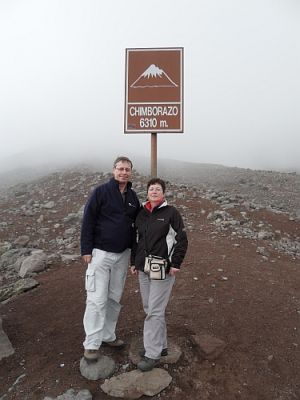
As travel costs rise and airlines cut services, large and small companies are rethinking business travel and face-to-face meetings.
The technology has matured to the point where it is often practical, affordable and more productive to move digital bits instead of bodies.
The emerging trend goes well beyond a reaction to rising travel costs and weakening economies. Past predictions that technology could replace travel have been frequent and premature. The main difference today is that the technology is finally catching up to its promise.
There's no single breakthrough - rather a series of advances in telecommunications networks, software and computer processing.
The results can be seen not only in the expensive new telepresence systems, but also in more mainstream collaboration technologies - Web conferencing, online document sharing, wikis and Internet telephony. Companies of all sizes are beginning to shift to web-based meetings for training and sales presentations.
Of course, face-to-face meeting are not obsolete. It's simply that digital tools are making business travel more selective. A recent report estimates that up to 20% of business travel could be replaced by videoconferencing today.
A range of companies offer the mainstream online communications and collaboration tools: WebEx, Citrix, Microsoft, IBM and others, plus top-end products from Cisco, HP and Polycom.
Completed telepresence rooms, typically with three huge curved screens (and a fourth screen above for shared work), custom lighting and acoustics, cost up to $350,000. That cost is rapidly decreasing.
With more than 200 telepresence rooms, CISCO says it is avoiding $100M in annual travel costs, and reducing greenhouse gas emissions from air travel by 10%. HP says air travel for offices with telepresence rooms is down 25%.
The paradox in "telepresence" is that it stimulates the richest form of human interaction: people talking to each other, face to face.
But, many agree that it is not a perfect substitute. You don't learn about other cultures with telepresence. You get things from being there, over breakfast and dinner, building relationships face-to-face.
Some years ago, I made a televised speech from San Diego to a conference in Australia. That could not compare with the level of personal interaction and enjoyment I achieved during my recent Australia trip. The travel time was about 14 hours each way.
But, the personal interaction was worth the journey.
As Travel Costs Rise, More Meetings Go Virtual:
http://tinyurl.com/6ez7m7
Jim Pinto on Virtual Visits for the holidays:
http://www.jimpinto.com/writings/virtualvisits.html
The technology has matured to the point where it is often practical, affordable and more productive to move digital bits instead of bodies.
The emerging trend goes well beyond a reaction to rising travel costs and weakening economies. Past predictions that technology could replace travel have been frequent and premature. The main difference today is that the technology is finally catching up to its promise.
There's no single breakthrough - rather a series of advances in telecommunications networks, software and computer processing.
The results can be seen not only in the expensive new telepresence systems, but also in more mainstream collaboration technologies - Web conferencing, online document sharing, wikis and Internet telephony. Companies of all sizes are beginning to shift to web-based meetings for training and sales presentations.
Of course, face-to-face meeting are not obsolete. It's simply that digital tools are making business travel more selective. A recent report estimates that up to 20% of business travel could be replaced by videoconferencing today.
A range of companies offer the mainstream online communications and collaboration tools: WebEx, Citrix, Microsoft, IBM and others, plus top-end products from Cisco, HP and Polycom.
Completed telepresence rooms, typically with three huge curved screens (and a fourth screen above for shared work), custom lighting and acoustics, cost up to $350,000. That cost is rapidly decreasing.
With more than 200 telepresence rooms, CISCO says it is avoiding $100M in annual travel costs, and reducing greenhouse gas emissions from air travel by 10%. HP says air travel for offices with telepresence rooms is down 25%.
The paradox in "telepresence" is that it stimulates the richest form of human interaction: people talking to each other, face to face.
But, many agree that it is not a perfect substitute. You don't learn about other cultures with telepresence. You get things from being there, over breakfast and dinner, building relationships face-to-face.
Some years ago, I made a televised speech from San Diego to a conference in Australia. That could not compare with the level of personal interaction and enjoyment I achieved during my recent Australia trip. The travel time was about 14 hours each way.
But, the personal interaction was worth the journey.
As Travel Costs Rise, More Meetings Go Virtual:
http://tinyurl.com/6ez7m7
Jim Pinto on Virtual Visits for the holidays:
http://www.jimpinto.com/writings/virtualvisits.html

Geen opmerkingen:
Een reactie posten